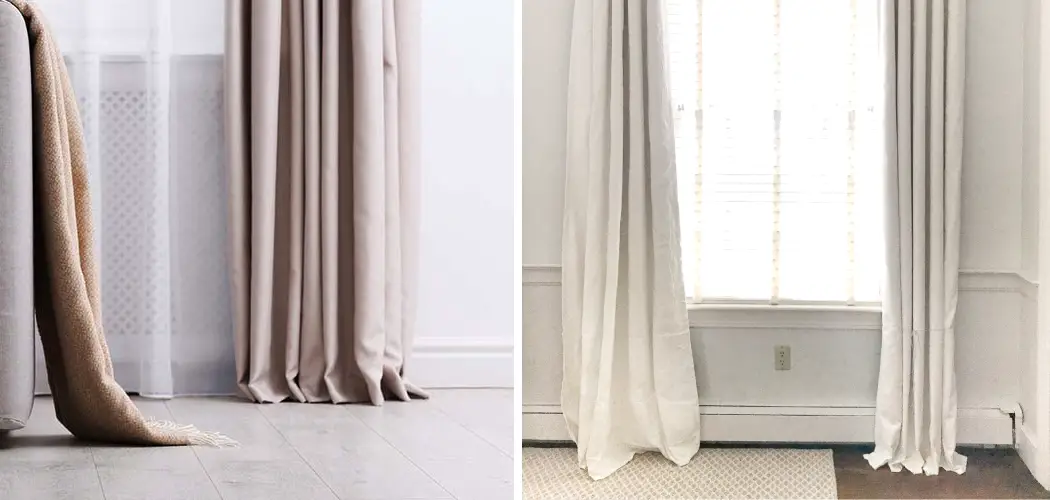Are you tired of your curtains constantly flaring out at the bottom, ruining the neat and polished look of your windows? Well, you’re not alone. Many people struggle with this common issue, but luckily, there are simple solutions to keep your curtains in place.
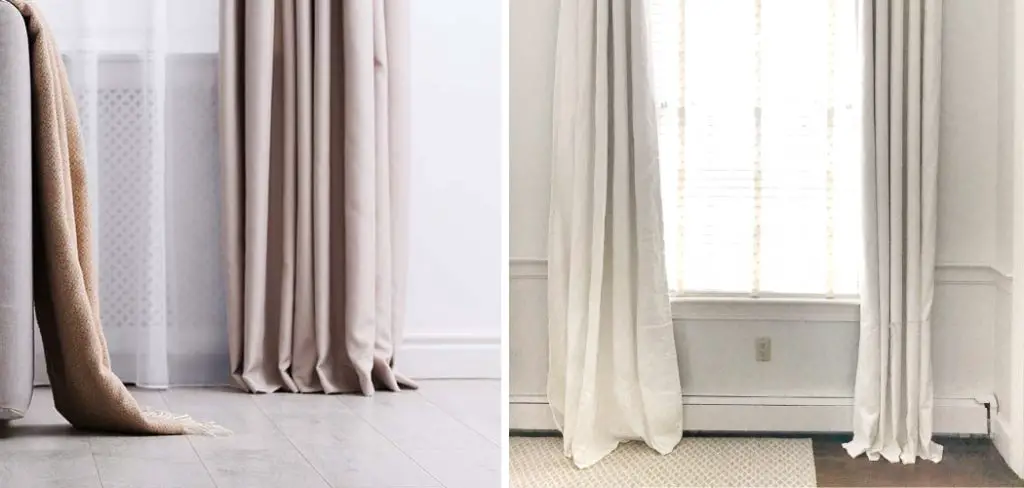
Whether it’s a gentle breeze, air conditioning, or even just everyday movement, curtains have a tendency to billow out and lose their shape at the bottom.
In this article, we will explore various techniques and tricks on how to keep curtains from flaring out at the bottom. From using curtain weights and clips to adjusting the length and fabric, we’ll cover practical methods that can help you maintain a clean and elegant appearance for your windows. Say goodbye to unruly curtains and say hello to a stylish and well-kept window dressing.
The Importance of Well-Styled Curtains
Curtains can add beauty and style to any room, but it’s important to make sure they fit properly. Not only will ill-fitting curtains detract from the aesthetics of the space, but poorly hung curtains may not provide enough privacy or insulation. This is why having well-styled curtains that hang neatly at the bottom is essential for any room.
The biggest issue that comes with hanging curtains is the tendency for them to flare out or billow at the bottom. This can be an eye sore and ruin the overall look of a room. Fortunately, there are some simple steps you can take to prevent this from happening. Here’s how to keep curtains from flaring out at the bottom:
1. Hang your curtains using rings with clips instead of traditional rod pockets. This will keep the fabric taut and make it harder for them to billow outwards when they move in a breeze.
2. If possible, use multiple curtain rods along each panel so that you can adjust them as needed if one side starts to hang lower than the other.
3. Use a weighted hem on the bottom of your curtains to keep them hanging properly. This is especially helpful for heavier fabrics such as velvet or suede, which tend to be more susceptible to billowing at the bottom.
4. Ensure that your curtains are hung at the correct height–not too low or too high–so that they have enough weight at the bottom to hang correctly and don’t drag along the floor.
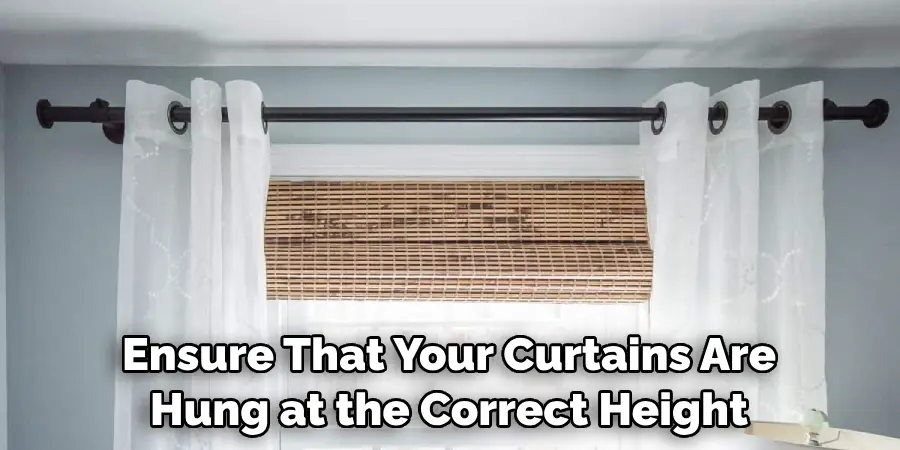
By following these simple steps, you can avoid having ill-fitting curtains in your home that detract from its beauty and style. With well-styled curtains, your room can stay looking great for years to come!
Impact of Fabric Weight on Curtain Behavior
The weight of the fabric used for curtains can also have an effect on how they hang. Heavier fabrics such as velvet or suede are more likely to pull down and cause your curtains to flare out at the bottom. Lighter-weight fabrics like cotton, linen, and sheer materials will be more prone to standing up away from the window frame.
To keep heavier fabrics from pooling at the bottom, use some tiebacks or other decorative accessories that are designed to hold them in place against the wall. If you’re using lightweight material, opt for a rod with a finial design on either end that can help anchor light materials in place without adding bulk.
Adding weights at regular intervals along the hemline can also help prevent flaring for both heavy and light materials. With a few simple adjustments, you can tame even the most stubborn curtains into submission and keep your windows looking neat and tidy.
10 Methods How to Keep Curtains from Flaring Out at the Bottom
1. Choose the Right Fabric:
The fabric you choose for your curtains plays a crucial role in their behavior and tendency to flare out. Opt for heavyweight fabrics such as velvet, brocade, or heavy cotton blends, as these have more weight and will hang better, reducing the likelihood of flaring out.
Avoid lightweight or sheer fabrics, as they are more prone to billowing. While they may look light and airy, these fabrics are more difficult to keep in place.

2. Curtain Linings:
Consider adding curtain linings to your existing curtains. Linings provide additional weight and stability, helping to prevent flaring out. They also offer insulation benefits and can enhance the longevity of your curtains.
Choose linings made from heavyweight fabrics like a blackout or thermal linings, depending on your needs. Measure your curtains and purchase linings that match the exact measurements for a secure fit. When installing, make sure to attach the linings at the top and the bottom to help keep your curtains from flaring.
3. Use Curtain Weights:
Curtain weights are small objects that attach to the bottom hem of your curtains, providing extra weight to keep them in place. These weights can be sewn directly into the hem or attached using clips or hooks. They are especially useful for lightweight fabrics that tend to flare out easily.
Experiment with different types of weights to find the best option for your curtains. These can range from small pieces of metal to plastic pellets. You may even be able to find custom curtain weights specifically designed for your curtains.
4. Clip Rings or Hooks:
Another effective method to prevent curtain flaring is to use clip rings or hooks. These accessories allow you to secure the curtain fabric to the curtain rod, keeping it in place and reducing movement. Clip rings are particularly useful for lightweight curtains or those made from delicate materials.
To install them, attach the rings to the back of your curtains and then slide them onto the curtain rod. Hooks are also easy to use; simply hang them from the top hem of your curtains and loop them onto the curtain rod.
5. Adjust Curtain Length:
Proper curtain length is essential to prevent flaring out at the bottom. Ensure that your curtains are long enough to reach the floor or slightly puddle, but not excessively. Curtains that are too short may not have enough weight to hang properly, while overly long curtains can create unnecessary bulk and increase the chances of flaring out.
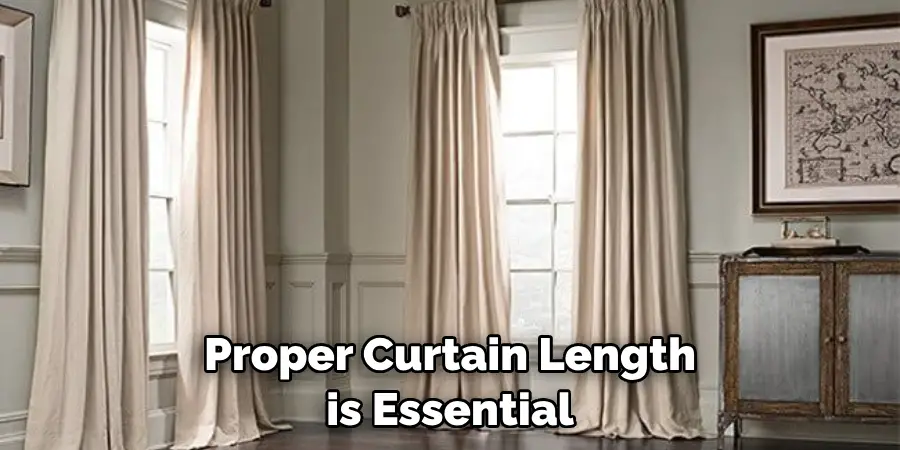
6. Double Curtain Rods:
Consider using double curtain rods for added stability. With this method, you can hang sheer curtains on the inner rod and heavier curtains on the outer rod. The sheer curtains will act as a barrier to draft and movement, reducing flaring out while still allowing natural light to enter the room.
7. Tiebacks and Holdbacks:
Using tiebacks or holdbacks can help to hold curtains in place and minimize flaring out. These decorative elements secure the curtain fabric to the side of the window when not in use, preventing unnecessary movement.
Choose tiebacks that complement your curtains and overall decor. Ensure they are properly secured and in the right position. Additionally, tiebacks are suggested for heavier fabrics, such as velvet or embroidered curtains. The tiebacks can also be used to create a beautiful visual effect, adding a touch of elegance and flair to any room.
8. Sew a Hem Weights Pocket:
For a more discreet approach, sew a pocket into the bottom hem of your curtains and insert small weights or coins. This method adds weight evenly along the hemline, preventing flaring out without the need for visible weights or clips.
It is best suited for curtains that have a sewn hem rather than a hem tape. To make the pocket, stitch a line of stitching across the entire width of the hem and insert weights into each pocket. This method is best for heavier fabrics like velvet or jacquard.
9. Secure Curtains to the Wall:
If your curtains tend to flare out excessively, you can secure them to the wall to keep them in place. Attach hook-and-loop fasteners, adhesive hooks, or discreet pins to the wall and corresponding points on the curtains. This method will restrict movement and maintain a clean appearance. Be sure not to attach anything too close to the windowsill or floor, as it could lead to damage.
10. Iron and Steam:
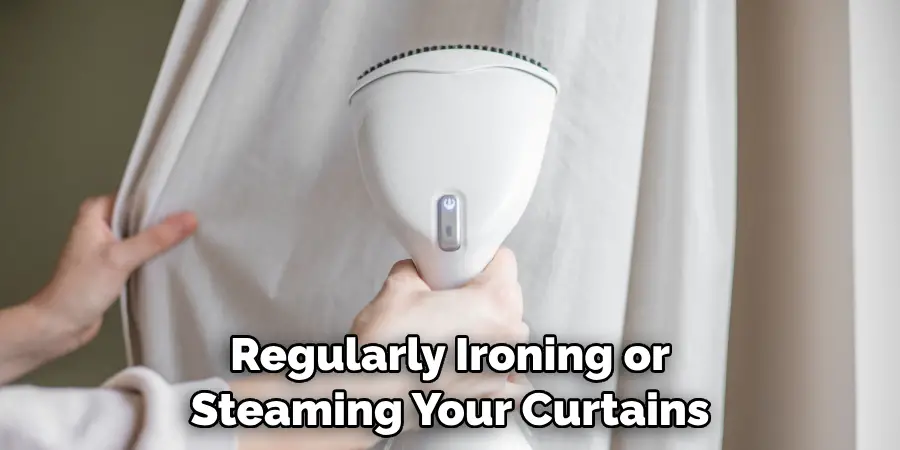
Regularly ironing or steaming your curtains can help to eliminate wrinkles and maintain a crisp and flat appearance. Pay special attention to the bottom hem and ensure it is pressed down firmly. Wrinkles can contribute to flaring out, so keeping your curtains well-maintained is essential. If you do not have access to an iron, take your curtains to a dry cleaner or tailor for professional pressing.
Conclusion
Overall, in order to keep curtains from flaring out at the bottom, you should first choose either a rod or pole that has a heavier weight and finials that securely fasten.
Hang the rod high on the wall and make sure that the curtains are full-length so they cannot fly away during strong winds. Experiment with different weights, holders, and fabrics to find out which works best for your particular situation.
The key is to make sure your rod and finials are not only strong but have enough weight to effectively hold up your curtains. Lastly, try using a hook holder instead of tacking it into place. Follow these simple instructions outlined in this blog post about how to keep curtains from flaring out at the bottom, and you’ll be able to get the job done with ease.

